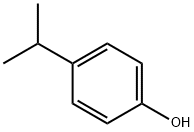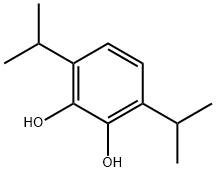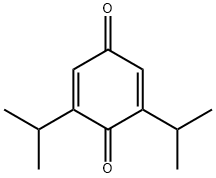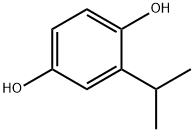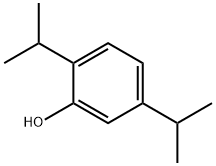Diphenyl ether , >99.0%(GC) , 101-84-8
Synonym(s):
Diphenyl ether;Diphenyl oxide;Phenyl ether;Phenyl ether, Diphenyl oxide
CAS NO.:101-84-8
Empirical Formula: C12H10O
Molecular Weight: 170.21
MDL number: MFCD00003034
EINECS: 202-981-2
| Pack Size | Price | Stock | Quantity |
| 100ML | RMB37.60 | In Stock |
|
| 500ML | RMB80.80 | In Stock |
|
| 2.5L | RMB293.60 | In Stock |
|
| 10L | RMB792.00 | In Stock |
|
| others | Enquire |
PRODUCT Properties
| Melting point: | 26 °C |
| Boiling point: | 259 °C(lit.) |
| Density | 1.073 g/mL at 25 °C(lit.) |
| vapor density | >5.86 (25 °C, vs air) |
| vapor pressure | <1 mm Hg ( 20 °C) |
| FEMA | 3667 | DIPHENYL ETHER |
| refractive index | n |
| Flash point: | >230 °F |
| storage temp. | Store below +30°C. |
| solubility | alcohol: soluble(lit.) |
| form | Colorless liquid |
| Specific Gravity | 1.073 |
| color | White or Colorless to Almost white or Almost colorless |
| Relative polarity | 2.8 |
| Odor | Weak geranium. |
| Odor Threshold | 0.1ppm |
| explosive limit | 0.8-1.5%(V) |
| Odor Type | green |
| biological source | synthetic |
| Water Solubility | insoluble |
| FreezingPoint | 27℃ |
| Merck | 14,7288 |
| JECFA Number | 1255 |
| BRN | 1364620 |
| Henry's Law Constant | 2.13 at 20 °C (approximate - calculated from water solubility and vapor pressure) |
| Exposure limits | NIOSH REL: TWA 1 ppm (7 mg/m3), IDLH 100 ppm; OSHA PEL: TWA 1
ppm; ACGIH TLV: TWA 0.1, STEL 2 ppm (adopted). |
| Dielectric constant | 3.7(30℃) |
| InChIKey | USIUVYZYUHIAEV-UHFFFAOYSA-N |
| LogP | 4.21 at 25℃ |
| CAS DataBase Reference | 101-84-8(CAS DataBase Reference) |
| NIST Chemistry Reference | Diphenyl ether(101-84-8) |
| EPA Substance Registry System | Phenyl ether (101-84-8) |
Description and Uses
Diphenyl ether (diphenyl oxide) is a colorless liquid with a floral odor. It is a white, crystalline solid at temperatures below 80ºF (27ºC). It has low volatility, low solubility in water, and is stable at high temperatures. Avoid contact with oxidizing materials.
Liquid diphenyl oxide is used primarily in industry. It is used in the industrial setting as a heat transfer fluid. It is the major component of Dowtherm A® (an eutectic mixture of phenyl ether and biphenyl) and further as a chemical intermediate in the production of surface-active agents and hightemperature lubricants, and in perfumery due to its geranium-like odour (ACG99b). It is also used as a chemical intermediate in the manufacture of surfactants and fire retardants.
Diphenyl oxide (DPO) is manufactured using the direct phenol method.
Diphenyl ether is widely used as a heat transfer agent and a dye carrier. It can be used alone or as a mixture with other materials. Because of its reactivity, It can also be used as a raw material or chemical intermediate to produce commercial products. Diphenyl ether is used in the production of:
- Diphenyl ether is employed as a processing aid in the production of polyesters. It acts as a chemical intermediate in the production of surface active agents and high temperature lubricants, fire retardants like polybrominated diphenyl ethers (PBDEs) and fragrance for detergents.
- Heat transfer media – like DOWTHERMTM fluids used for heating industrial processes
- Alkylated diphenyl oxides – used to make surfactants, greases and lubricants
- Halogenated diphenyl oxides – used in insecticides, wood preservatives, and flame retardants for appliance casings in consumer electronic products
- High temperature solvents
- Coatings
- Textile dye labeling
- Plastics – like ethylene-propylene-diene monomer (EPDM) rubber that is used for membrane roofing materials
- Diphenyl ether plays a vital role in the Ferrario reaction to produce phenoxathiin, which finds application in polyamide and polyimide production. Involving similar reactions, diphenyl ether is a significant side product in the high-pressure hydrolysis of chlorobenzene in the production of phenol.
- Diphenyl ether is found in alcoholic beverages. Diphenyl ether is present in muscat grapes, green tea, vanilla, lemon balm, buckwheat, potato chips and grilled beef. Diphenyl ether is a flavouring ingredient.
Safety
| Symbol(GHS) |   GHS07,GHS09 |
| Signal word | Warning |
| Hazard statements | H319-H410 |
| Precautionary statements | P264-P273-P280-P305+P351+P338-P337+P313-P391 |
| Hazard Codes | N,Xi,T |
| Risk Statements | 51/53-36/37/38-39/23/24/25-23/24/25-36/38-36 |
| Safety Statements | 60-61-57-37/39-26-45-36/37 |
| OEB | B |
| OEL | TWA: 1 ppm (7 mg/m3) |
| RIDADR | UN 3077 9/PG 3 |
| WGK Germany | 2 |
| RTECS | KN8970000 |
| Autoignition Temperature | 610 °C |
| TSCA | Yes |
| HS Code | 2909 30 10 |
| HazardClass | 9 |
| PackingGroup | III |
| Hazardous Substances Data | 101-84-8(Hazardous Substances Data) |
| Toxicity | LD50 orally in Rabbit: 2450 mg/kg LD50 dermal Rabbit > 7940 mg/kg |
| IDLA | 100 ppm |


